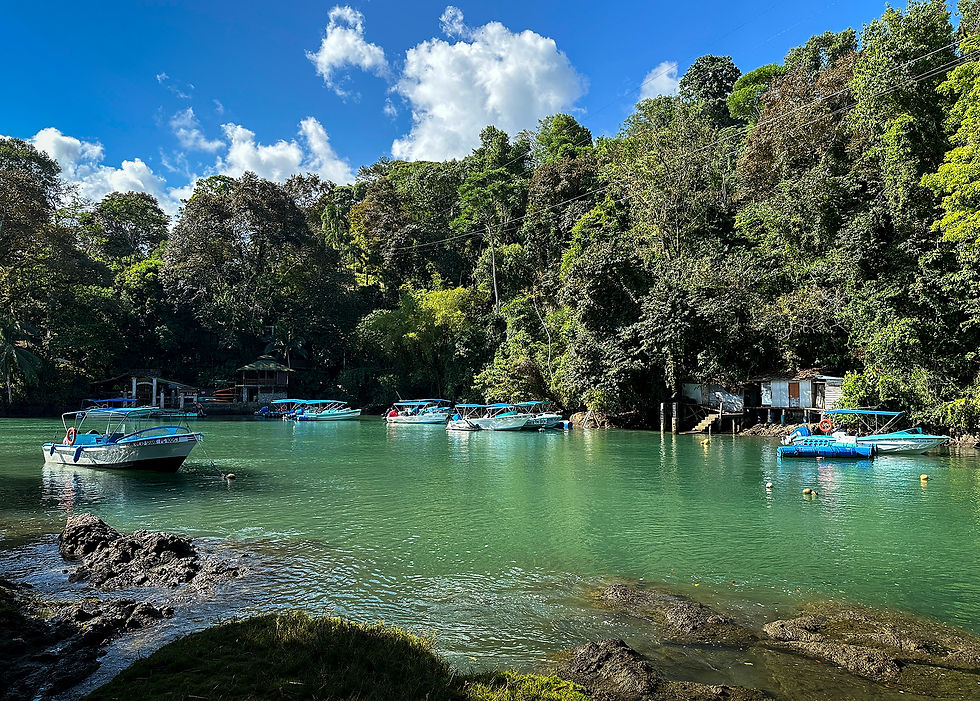The Best of Southern Costa Rica
- Tony Allaker

- Jul 25
- 4 min read
Photo Galleries now available from a fantastic wildlife trip to Southern Costa Rica.
I have now prepared Galleries from a fascinating trip covering some of the special wildlife areas of Southern Costa Rica.

The trip, called 'Best of Southern Costa Rica', was organised by Naturetrek and our group was escorted by an expert guide called Thomas, accompanied by an entertaining and talented bird spotting driver called Rodrigo. The focus of the trip was the abundant and colourful birdlife including some iconic species, as well as some of the iconic rainforest mammals, reptiles and amphibians of the region.
We arrived at the capital San Jose and stayed overnight. After a morning birdwatch at our hotel we headed towards our first destination in the Talamanca Mountains. This involved a gradual increase in elevation, and we stopped on the way for lunch and refreshments at two locations with beautiful gardens and hummingbird feeding stations. This provided an excellent opportunity to see and photograph some of the special Costa Rican birds.




Our base in the cloudforests of the Talamanca Mountains was around 2,200m elevation and home to the Resplendent Quetzal, a species of trogon often touted as one of the most beautiful birds in the world! We were lucky to have some really great views of these amazing birds.



From Talamanca we headed down the mountainous spine of Costa Rica to Cruces Biological Station, only five kilometres from the Panama border. On the way we ventured up to 3,300 metres to explore the parámo, a habitat type more typically found in the high Andes of South America, which has a very limited and fragmented distribution in Costa Rica. We went in search of the Volano Junco, a rare, near-endemic specialist of these higher elevations. We were successful, with Rodrigo shouting 'Junco, Junco' when he spotted one!


Cruces Biological Station is situated in botanical gardens in pre-montane wet forest and is
an excellent base to spot birds. We were introduced to several new tanagers and hummingbirds, plus aracari, parakeets and parrots amongst many other birds. Also agouti were common in the gardens.





The next destination involved leaving the mountains and travelling into the lowland rainforests boarding Piedras Blancas National Park. We were introduced to a new group of birds suited to this environment, as well as caiman, the fascinating tent making bats and a night walk to see the iconic red-eyed tree frog.





From Piedras Blancas National Park we travelled to Sierpe, in order to catch a boat to our base outside Corcovado National Park. Near Sierpe we stopped at Finca 6, a museum and archaeological site which displays some of the stone spheres of the extinct Diquis culture. In the nearby trees we were entertained by some curious Squirrel Monkeys, and a rather impressive Hercules Beetle!



From Sierpe we boarded a boat for the 2 hour journey down the Sierpe River and along the
palm-fringed Pacific coastline to Drake’s Bay on the northern edge of Corcovado National Park. On the way we visited some small islands where Magnificant Frigatebirds, as well as Red-footed and Brown Boobies were nesting. Tricky photography trying to catch birds in flight in a rocking boat, but some photos turned out OK!




Corcovado National Park is the 'jewel in the crown' of Costa Rica's protected areas. It covers 424 square kilometres of the Osa Peninsula and protects the largest track of primary
rainforest left on the Pacific coastline of the Americas. You need a permit to visit and have to access the park by boat. We spent a fantastic day in the park seeing a host of new birds, plus animals such as the Brown-throated Sloth, Baird's Tapir and Northern Tamandua.




Following our time at Drake's Bay, we returned by boat to Sierpe and from there drove north along the Pacific coastline to Carara National Park, our final base of the trip. Carara supports one of the few areas of pristine lowland tropical forest left on the Pacific slope. Our first stop was a boat trip at Tarcoles Estuary, where we saw an abundance of water birds, including the Roseate Spoonbill, Brown Pelican, Amazon Kingfisher and many different herons and waders.





An unusual feature of the region is the distinctive split in wildlife habitat north and south of the Tarcoles River. We travelled north over the famous Crocodile Bridge to see some new birds including the Hoffman's Woodpecker, White-throated Magpie-jay, and the rare Double-striped Thick-knee. We also managed our best views of Scarlet Macaw and Mantled Howler Monkey.






If you have never been to Costa Rica I would thoroughly recommend it. This Blog only covers a fraction of the wildlife and landscapes viewed on the trip but will hopefully provide some idea of the experiences. There are many more photos from the trip in my Central and South America Gallery
The photos are arranged in six sub-Galleries as follows (Please click on the title link to go to the individual Gallery):
Costa Rica Animals (excludes birds)
I hope that you have found this Blog interesting and enjoy the photos.


Comments